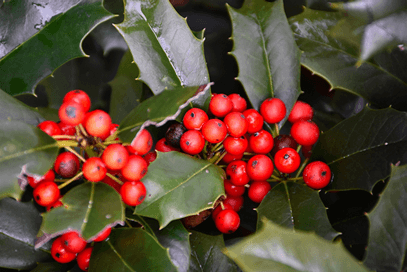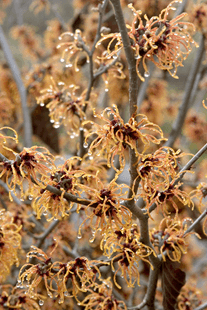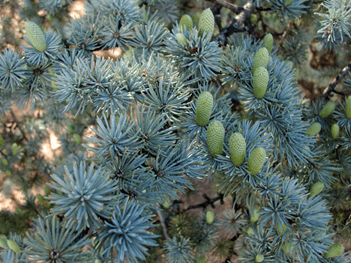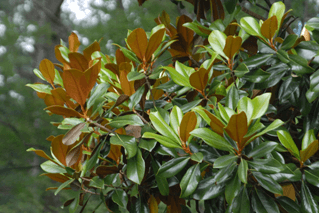In this blog, we will be discussing discounts offered for winter pruning, the best trees for winter interest, and some neat facts about Christmas trees.
Winter Pruning Discounts
Winter is a great time to prune trees for many reasons. With all the leaves gone, our arborists have a better view of the tree’s structure and branches that may be damaged or broken. We can easily see which branches need to be removed. When we prune away weak branches, we can reduce the hazard of breakage that occurs with winter winds and snow or ice accumulation.
Winter tree pruning also decreases the risk of insects and diseases invading freshly cut wound wood. A couple of tree species, such as Elms or Oaks should be pruned in winter to avoid the risk of Dutch Elm Disease or Oak Wilt. Pests are not a common issue in the winter months, and we can eliminate the risk of vascular diseases from insects which can be a problem for trees with open wounds in the summer months.
We are now offering discounted rates to schedule your pruning project for this winter. Discount percentages will vary depending on the size of the job. Give us a call today to learn more and receive a free estimate on the work you are needing. You don’t want to miss out on this great offer!
Great Trees for Winter Interest
An important part of planning a great landscape design is including year-round visual interest. While deciduous trees are bare in the winter months, many species hold onto their leaves all year (evergreen trees) or even bloom in the most unexpected times. Here is a list of a few of our favorite trees with winter interest.
Holly (Nellie Stevens)

The Holly may be one of the most iconic tree for its holiday foliage. We recommend the ‘Nellie Stevens’ Holly for its upright form and hardiness in our area. The Holly is a broad-leaved evergreen, meaning, similar to needled evergreens, it holds onto its leaves year-round. The bright red berries are another great feature of this tree that adds color and interest to your landscape and is an attractant to birds.
Witch Hazel

The Witch Hazel is a large-growing shrub or small tree that boasts small, fragrant flowers that bloom in the winter. Bloom color ranges from yellow to orange to red and is sure to be a statement piece on your property when most other plants are bare.
Blue Atlas Cedar

A needled evergreen tree we recommend as an alternative to the Blue Spruce is the Blue Atlas Cedar. Blue Spruces do not do well in our area due to the fungal infection ‘Needlecast disease’ which is common in our climate. The blue-tinted needles on the Blue Atlas Cedar are sure to stand out in your landscape.
Southern Magnolia (Bracken’s Brown)

The Southern Magnolia is always a crowd favorite when the huge white flowers are blooming. These trees have a southern charm and make quite a statement in the landscape. After the blooms have faded and trees go into the dormant season, these broad-leaved evergreens hold onto their leaves. We love the Bracken’s Brown variety which has brown, fuzzy undersides of the glossy-green leaves.
There are many trees that we recommend for your landscape, and some that don’t do as well in our area. Our goal is to educate the customer to plant the “right tree in the right place” so we can avoid unnecessary future problems. Please call your arborist for more questions about these trees or other options that may do well on your property.
Christmas Tree Facts
Decorating Christmas trees is nothing new to us, but here are some interesting facts you may not know about this fun holiday tradition.
- The tallest tree displayed at Rockefeller Center arrived in 1948. It was a Norway Spruce that measured 100 feet tall and hailed from Killingworth, Connecticut.
- Christmas trees are grown in all 50 states, including Arizona and Hawaii. The top American producers of Christmas trees are Oregon, North Carolina, and Michigan. Together, these three states harvested more than 12 million Christmas trees in 2012.
- Most tree varieties take a minimum of six to eight years to grow to the 6-7’ you’re looking for in your average Christmas tree.
- One acre of real Christmas trees consumes about 500 pounds of carbon dioxide each year. That same acreage produces about 1000 pounds of oxygen annually. Guess what: that’s the same amount that 18 people need to breathe in a year
- Recycled real Christmas trees have been used to make sand and soil erosion barriers, mulched for parks and play areas, and been placed in ponds for fish shelter.
There are a handful of local businesses that will take your Christmas tree for recycling once the holidays have passed, including the Nixa Recycling Center.

